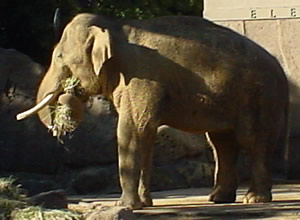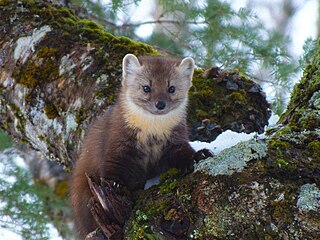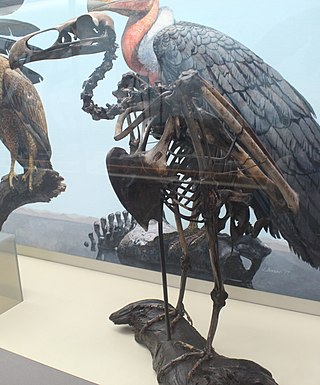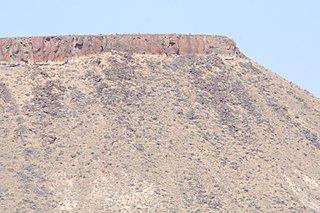
The Mustelidae are a diverse family of carnivorous mammals, including weasels, stoats, badgers, otters, martens, grisons, and wolverines. Otherwise known as mustelids, they form the largest family in the suborder Caniformia of the order Carnivora with about 66 to 70 species in nine subfamilies.

Acinonyx is a genus within the Felidae family. The only living species of the genus, the cheetah, lives in open grasslands of Africa and Asia.

The honey badger, also known as the ratel, is a mammal widely distributed in Africa, Southwest Asia, and the Indian subcontinent. Because of its wide range and occurrence in a variety of habitats, it is listed as Least Concern on the IUCN Red List.

A marten is a weasel-like mammal in the genus Martes within the subfamily Guloninae, in the family Mustelidae. They have bushy tails and large paws with partially retractile claws. The fur varies from yellowish to dark brown, depending on the species; it is valued by animal trappers for the fur trade. Martens are slender, agile animals, which are adapted to living in the taiga, and inhabit coniferous and northern deciduous forests across the Northern Hemisphere.

The fisher is a carnivorous mammal native to North America, a forest-dwelling creature whose range covers much of the boreal forest in Canada to the northern United States. It is a member of the mustelid family, and is in the monospecific genus Pekania. It is sometimes referred to as a fisher cat, although it is not a cat.

Elephas is one of two surviving genera in the family of elephants, Elephantidae, with one surviving species, the Asian elephant, Elephas maximus. Several extinct species have been identified as belonging to the genus, extending back to the Pliocene or possibly late Miocene.

The North American porcupine, also known as the Canadian porcupine, is a large quill-covered rodent in the New World porcupine family. It is the second largest rodent in North America after the North American beaver. The porcupine is a caviomorph rodent whose ancestors crossed the Atlantic from Africa to Brazil 30 million years ago, and then migrated to North America during the Great American Interchange after the Isthmus of Panama rose 3 million years ago.

Meles is a genus of badgers containing four living species known as Eurasian badgers, the Japanese badger, Asian badger, Caucasian badger and European badger. In an older categorization, they were seen as a single species with three subspecies. There are also several extinct members of the genus. They are members of the subfamily Melinae of the weasel family, Mustelidae.

The American marten, also known as the American pine marten, is a species of North American mammal, a member of the family Mustelidae. The species is sometimes referred to as simply the pine marten. The name "pine marten" is derived from the common name of the distinct Eurasian species, martes martes. Martes americana is found throughout Canada, Alaska, and parts of the northern United States. It is a long, slender-bodied weasel, with fur ranging from yellowish to brown to near black. It may be confused with the fisher, but the marten is lighter in color and smaller. Identification of the marten is further eased by a characteristic bib that is a distinctly different color than the body. Sexual dimorphism is pronounced, with males being much larger.

Neurotrichus is a genus of shrew-like moles. It is classified, together with the fossil genus Quyania, in the tribe Neurotrichini of the subfamily Talpinae. The only living species is the American shrew-mole (N. gibbsii) of the northwestern United States and British Columbia. A fossil species, Neurotrichus columbianus from the Hemphillian of Oregon, was placed in the genus in 1968, but this animal is now thought to be more closely related to the Chinese fossil genus Yanshuella.

Palaeoloxodon recki, often known by the synonym Elephas recki is an extinct species of elephant native to Africa and West Asia from the Pliocene or Early Pleistocene to the Middle Pleistocene. During most of its existence, the species represented the dominant elephant species in East Africa. The species is divided into five roughly chronologically successive subspecies. While the type and latest subspecies P. recki recki as well as the preceding P. recki ileretensis are widely accepted to be closely related to Eurasian Palaeoloxodon, the relationships of the other, chronologically earlier subspecies to P. recki recki and P. recki ileretensis are uncertain, with it being suggested they are unrelated and should be elevated to separate species.

Teratornis was a genus of huge North American birds of prey—the best-known of the teratorns—of which, two species are known to have existed: Teratornis merriami and Teratornis woodburnensis. A large number of fossil and subfossil bones, representing more than 100 individuals, have been found in locations in California, Oregon, southern Nevada, Arizona, and Florida, though most are from the Californian La Brea Tar Pits. All remains except one Early Pleistocene partial skeleton from the Leisey Shell Pit near Charlotte Harbor, Florida date from the Late Pleistocene, with the youngest remains dating from the Pleistocene–Holocene boundary.

Ferret-badgers are the six species of the genus Melogale, which is the only genus of the monotypic mustelid subfamily Helictidinae.

Guloninae is a subfamily of the mammal family Mustelidae distributed across Eurasia and the Americas. It includes martens and the fisher, tayra and wolverine. These genera were formerly included within a paraphyletic definition of the mustelid subfamily Mustelinae.

The Rattlesnake Formation is a Miocene to late Pliocene geologic formation found along the John Day River Valley of Oregon, in the Western United States.

Megalictis is an extinct genus of large predatory mustelids that existed in North America during the "cat gap" from the Late Arikareean (Ar4) in the Miocene epoch. It is thought to have resembled a huge, jaguar-sized ferret, weighing up to 60–100 kilograms (130–220 lb).

Panthera blytheae is an extinct species of felid which lived during the Early Pliocene of Tibet. It has been initially suggested as the earliest known species of the genus Panthera, though its taxonomic placement has been disputed by other researchers who suggest that it likely belongs to a different genus.

The Pacific marten is a species of North American mammal, a member of the family Mustelidae. It is found throughout western North America.

Neogale is a genus of mustelid native to the Americas, ranging from Alaska south to Bolivia. Members of this genus are known as New World weasels.


























